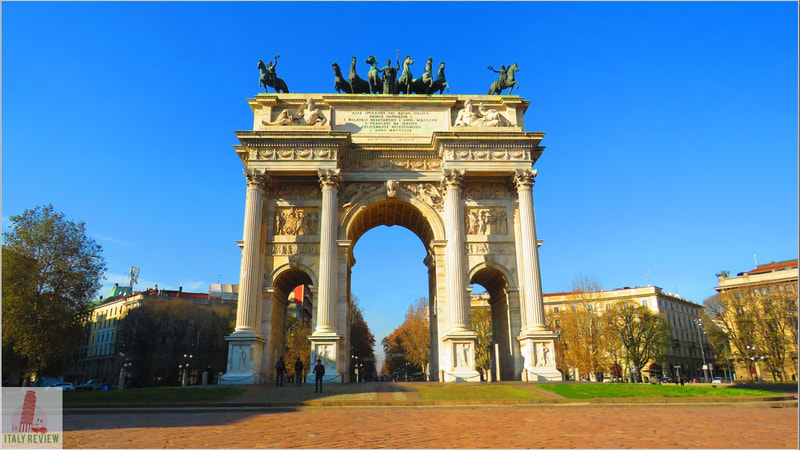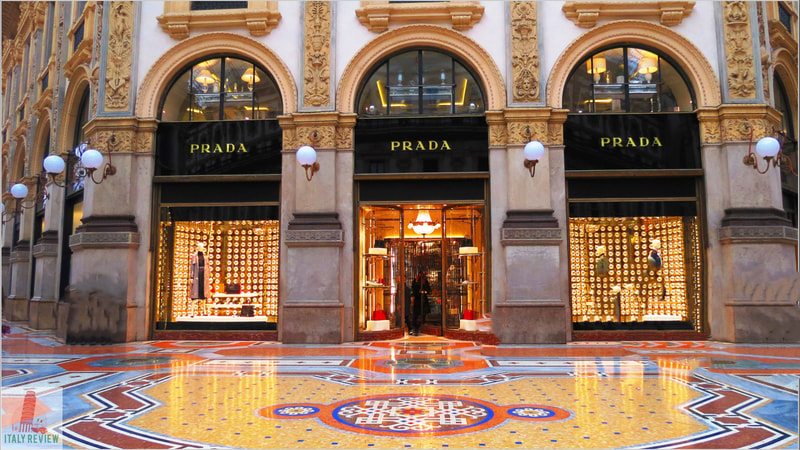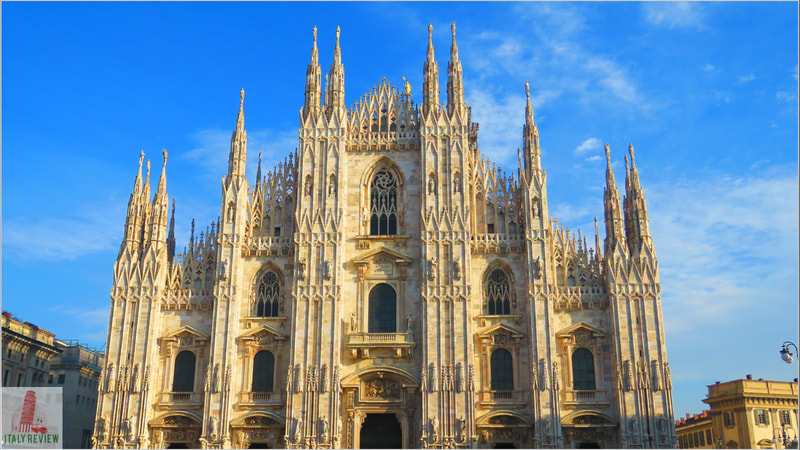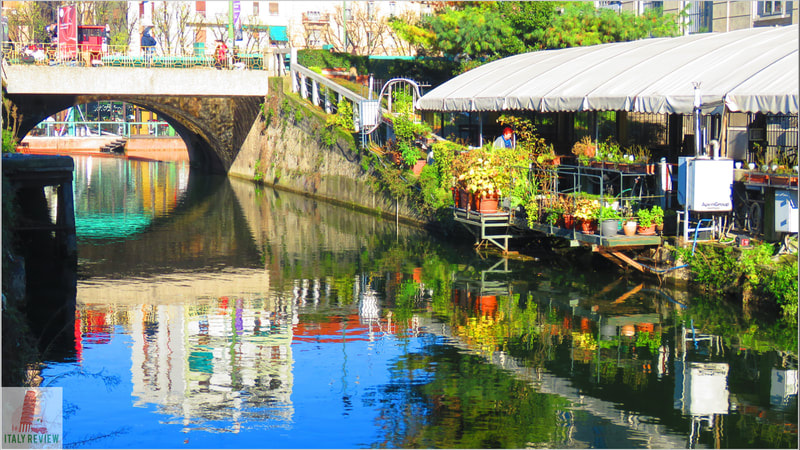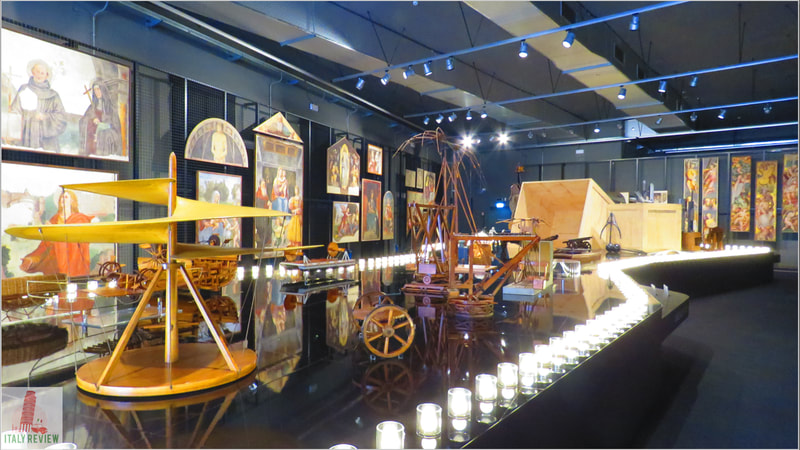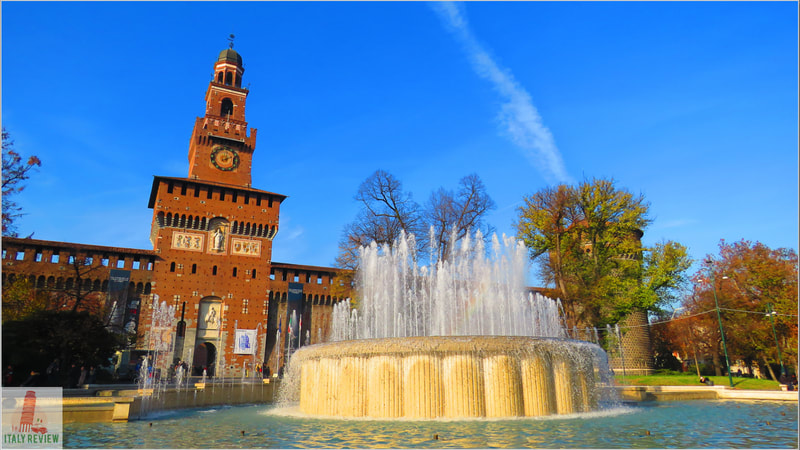Milan
|
Latest update: 15 February 2024
|
By Dion Protani
|
|
Although not the official capital of Italy, Milan can lay claim to several unofficial titles such as "Fashion Capital of Europe" or "Financial Capital of Italy".
This is a city of success where the world's top designers mingle with the movers and shakers of the business world in an environment of elegance and refinement. That modern sheen has taken a long time to create though, after an incredibly colourful and tumultuous history. |
Related links
Milan: city of fashion and elegance
Milan, the vibrant capital of Italy's Lombardy region, is a city renowned for its rich history, artistic heritage, and thriving contemporary culture. At its heart stands the magnificent Duomo di Milano, a symbol of the city and one of the largest Gothic cathedrals in the world. Nearby, the Galleria Vittorio Emanuele II is an elegant shopping arcade with luxurious boutiques and cafes, leading to the iconic La Scala Opera House, where opera performances and ballets captivate audiences.
Art enthusiasts can explore the impressive collections at the Brera Art Gallery, showcasing masterpieces by Italian and European artists, including Raphael and Caravaggio. The Pinacoteca di Brera, housed in a grand neoclassical palace, is a cultural gem offering a journey through centuries of art history.
For a taste of Milan's contemporary scene, head to the lively Navigli district, where picturesque canals are lined with charming cafes, bars, and artisan shops. Milan is also a fashion powerhouse, boasting a dynamic fashion district with designer boutiques and flagship stores.
Sports fans can visit the iconic San Siro Stadium, home to both AC Milan and Inter Milan football clubs, for a behind-the-scenes tour of this legendary venue. With its blend of historical landmarks, artistic treasures, and modern allure, Milan offers a captivating experience for visitors from around the globe.
Art enthusiasts can explore the impressive collections at the Brera Art Gallery, showcasing masterpieces by Italian and European artists, including Raphael and Caravaggio. The Pinacoteca di Brera, housed in a grand neoclassical palace, is a cultural gem offering a journey through centuries of art history.
For a taste of Milan's contemporary scene, head to the lively Navigli district, where picturesque canals are lined with charming cafes, bars, and artisan shops. Milan is also a fashion powerhouse, boasting a dynamic fashion district with designer boutiques and flagship stores.
Sports fans can visit the iconic San Siro Stadium, home to both AC Milan and Inter Milan football clubs, for a behind-the-scenes tour of this legendary venue. With its blend of historical landmarks, artistic treasures, and modern allure, Milan offers a captivating experience for visitors from around the globe.
Comune di Milano
|
Province: Metropolitan City of Milan
Region: capital of Lombardy Population: 1,349,930 (source: ISTAT 1 January 2023) Size: 181 km² Elevation: 120 metres Top sights: Milan Cathedral, Galleria Vittorio Emanuele II Close by: Monza, Lodi, Vigevano, Crema, Pavia, Como, Bergamo Recommended hotel: Château Monfort - Relais & Châteaux |
UNESCO World Heritage Site
Church and Dominican Convent of Santa Maria delle Grazie with "The Last Supper" by Leonardo da Vinci
Year: 1980
Church and Dominican Convent of Santa Maria delle Grazie with "The Last Supper" by Leonardo da Vinci
Year: 1980
What are the most popular tours and activities in Milan?
- Duomo di Milano: Visit Milan's iconic cathedral, a masterpiece of Gothic architecture, and enjoy panoramic views of the city from its terraces.
- The Last Supper: See Leonardo da Vinci's famous mural painting at the Santa Maria delle Grazie church and learn about its history and conservation.
- La Scala Opera House: Tour one of the world's most famous opera houses, home to renowned performances and a museum showcasing costumes and memorabilia.
- Sforza Castle: Explore this historic fortress turned museum, housing art collections, including Michelangelo's unfinished sculpture, the Pietà Rondanini.
- Brera Art Gallery: Discover a vast collection of Italian art, including works by Raphael, Caravaggio, and Tintoretto, in a former convent.
- Navigli Canals: Take a scenic boat tour or stroll along the picturesque canals lined with cafes, bars, and boutiques in Milan's Navigli district.
- Leonardo3 Museum: Immerse yourself in the world of Leonardo da Vinci with interactive exhibits and multimedia displays showcasing his inventions and artworks.
- Milan Fashion District: Shop at luxury boutiques and designer stores in Milan's fashion capital, home to renowned fashion houses and flagship stores.
- Pinacoteca di Brera: Visit this prestigious art gallery featuring masterpieces by Italian and European artists, housed in a grand neoclassical palace.
- San Siro Stadium: Experience the passion of Italian football with a guided tour of AC Milan and Inter Milan's shared stadium, including the locker rooms and pitch.
Milan Gallery
Milan in-depth
Milan: the Fashion Capital of Europe
Milan's title as Fashion Capital is reinforced by being the home to such names as Armani, Prada and Versace, just three of the stellar names who have shops within Milan's famous Quadrilatero della Moda. Otherwise known as the Quad d'Oro, the streets around Via Montenapoleone are the place to be seen for every fashionista and indeed, for any fashion house that takes itself seriously.
Milan's title as Fashion Capital is reinforced by being the home to such names as Armani, Prada and Versace, just three of the stellar names who have shops within Milan's famous Quadrilatero della Moda. Otherwise known as the Quad d'Oro, the streets around Via Montenapoleone are the place to be seen for every fashionista and indeed, for any fashion house that takes itself seriously.
Milan Sightseeing
In terms of sightseeing, the first place to start in Milan is on Piazza del Duomo. The biggest, busiest square in the city, it is of course home to the Duomo, Milan Cathedral with its incredible gothic facade and cavernous interior setting it apart from any of its rivals. You can also climb to the Cathedral's roof and walk around freely, enjoying the outstanding views from every angle. Look down from the Cathedral and to the right of the Piazza is the Galleria Vittorio Emanuele II. Built in 1865, it's Italy's oldest shopping centre but still unquestionably the most beautiful, with its iron and glass roof and polished floors leading to upscale boutiques.
In terms of sightseeing, the first place to start in Milan is on Piazza del Duomo. The biggest, busiest square in the city, it is of course home to the Duomo, Milan Cathedral with its incredible gothic facade and cavernous interior setting it apart from any of its rivals. You can also climb to the Cathedral's roof and walk around freely, enjoying the outstanding views from every angle. Look down from the Cathedral and to the right of the Piazza is the Galleria Vittorio Emanuele II. Built in 1865, it's Italy's oldest shopping centre but still unquestionably the most beautiful, with its iron and glass roof and polished floors leading to upscale boutiques.
Beyond Piazza del Duomo
Across the square from the Galleria are some of Milan's best museums, while walking in the opposite direction, you shortly reach the famous Teatro all Scala, the grand old theatre that has its own museum and a fascinating history. The city's other major museums and art galleries include the Pinacoteca di Brera, the Pinacoteca Ambrosiana and the National Museum of Science and Technology, within which you can find much of Da Vinci's work and experiments.
At the north-western edge of the city centre lies the huge Parco Sempione, home to a number of museums and monuments including the Arco della Pace, one of the iconic symbols of Milan. However, of even greater interest at the opposite end of the park is the magnificent Sforza Castle with its own collection of museums and galleries.
Across the square from the Galleria are some of Milan's best museums, while walking in the opposite direction, you shortly reach the famous Teatro all Scala, the grand old theatre that has its own museum and a fascinating history. The city's other major museums and art galleries include the Pinacoteca di Brera, the Pinacoteca Ambrosiana and the National Museum of Science and Technology, within which you can find much of Da Vinci's work and experiments.
At the north-western edge of the city centre lies the huge Parco Sempione, home to a number of museums and monuments including the Arco della Pace, one of the iconic symbols of Milan. However, of even greater interest at the opposite end of the park is the magnificent Sforza Castle with its own collection of museums and galleries.
Away from the centre of Milan
There is in fact a great deal to explore beyond the confines of the city centre. The area known as the Navigli consists of a series of canals, the most important of which are Naviglio Pavese and Naviglio Grande, around which you'll find some of the city's most vibrant night life.
To the north of the city centre, Milan's Cimitero Monumentale is worth the extra effort and time it takes to visit and the same can be said of the historic Chiaravalle Abbey which lies in the city's southern suburbs. Around the city centre, aside from Milan Cathedral, the most important religious buildings are the Basilica di Sant'Ambrogio and the Chiesa di Santa Maria delle Grazie, home of Da Vinci's Last Supper and requiring advanced booking for visits.
There is so much more to Milan than the few sights listed above; keep an eye out for the quirky Bosco Verticale which lies close to the uber-modern Porta Garibaldi train station. Arriving by train in the city you're more likely to pass through Milano Centrale whose design was heavily influenced by Mussolini and is a sight worth visiting even if you're not taking the train.
There is in fact a great deal to explore beyond the confines of the city centre. The area known as the Navigli consists of a series of canals, the most important of which are Naviglio Pavese and Naviglio Grande, around which you'll find some of the city's most vibrant night life.
To the north of the city centre, Milan's Cimitero Monumentale is worth the extra effort and time it takes to visit and the same can be said of the historic Chiaravalle Abbey which lies in the city's southern suburbs. Around the city centre, aside from Milan Cathedral, the most important religious buildings are the Basilica di Sant'Ambrogio and the Chiesa di Santa Maria delle Grazie, home of Da Vinci's Last Supper and requiring advanced booking for visits.
There is so much more to Milan than the few sights listed above; keep an eye out for the quirky Bosco Verticale which lies close to the uber-modern Porta Garibaldi train station. Arriving by train in the city you're more likely to pass through Milano Centrale whose design was heavily influenced by Mussolini and is a sight worth visiting even if you're not taking the train.
Milan - birthplace of the Panettone
In terms of food, Milan is home of the humble panettone. The traditional Christmas cake originates here and its production is carefully overseen by craftsmen with generations of skill and tradition. Much as with good wines, you can pay a lot of money for a good panettone from Milan or just content yourself with some of the less grandiose fare on offer at the city's supermarkets.
In terms of food, Milan is home of the humble panettone. The traditional Christmas cake originates here and its production is carefully overseen by craftsmen with generations of skill and tradition. Much as with good wines, you can pay a lot of money for a good panettone from Milan or just content yourself with some of the less grandiose fare on offer at the city's supermarkets.
History of Milan: from Mediolanum to the Sforzas
The modern name of the city derives from its original title, Mediolanum which roughly translates as "Middle of the Plain". In recent times, the ancient name has had new life breathed into it by a Milanese bank and their heavy, and it has to be said, annoying, advertising campaign.
Mediolanum was founded between 600 and 400 BC by a tribe of Gauls known as the Insubres. The Gauls gave way to the Romans in 222 BC and the city gradually grew in stature, eventually becoming capital of the Western Roman Empire in 286 AD before relinquishing that title to Ravenna in 402 . During this period, the Roman Empire Constantine issued the hugely important Edict of Milan which saw Christianity officially adopted as the official religion of the Empire.
After the collapse of the Western Roman Empire, control of Milan switched to the Goths who sacked the city in 539, before the Lombards who conquered the city in 569 AD and subsequent Franks (774 AD), eventually gave way to Frederick Barbarossa's Holy Roman Empire in 1162. During the later medieval period Milan was ruled by two powerful families: first the Visconti family who oversaw the construction of the Cathedral in 1386, and then the Sforza family whose name adorns the city centre castle.
The modern name of the city derives from its original title, Mediolanum which roughly translates as "Middle of the Plain". In recent times, the ancient name has had new life breathed into it by a Milanese bank and their heavy, and it has to be said, annoying, advertising campaign.
Mediolanum was founded between 600 and 400 BC by a tribe of Gauls known as the Insubres. The Gauls gave way to the Romans in 222 BC and the city gradually grew in stature, eventually becoming capital of the Western Roman Empire in 286 AD before relinquishing that title to Ravenna in 402 . During this period, the Roman Empire Constantine issued the hugely important Edict of Milan which saw Christianity officially adopted as the official religion of the Empire.
After the collapse of the Western Roman Empire, control of Milan switched to the Goths who sacked the city in 539, before the Lombards who conquered the city in 569 AD and subsequent Franks (774 AD), eventually gave way to Frederick Barbarossa's Holy Roman Empire in 1162. During the later medieval period Milan was ruled by two powerful families: first the Visconti family who oversaw the construction of the Cathedral in 1386, and then the Sforza family whose name adorns the city centre castle.
Milan from the Renaissance to the modern era
In a period of expansion during the Renaissance, Ludovico Sforza hired Leonardo Da Vinci for a series of projects including the design and construction of war machines to defend against rival city states. It was during this time that he painted the Last Supper, a fresco at Santa Maria delle Grazie which is a UNESCO World Heritage Site and one of the city's greatest attractions in modern times.
A 200 year period of Spanish rule preceded a slightly shorter term under Austrian stewardship, with both eras leaving an indelible imprint on the city landscape and greatly influencing its architectural styles. Milan eventually joined the nascent Kingdom of Italy in 1861, to which it has belonged ever since. World War Two had a heavy influence on the city; Allied bombing raids destroyed much of the city centre, and it was in Milan that former dictator Benito Mussolini was strung up in Piazzale Loreto in 1945.
In modern times, media mogul Silvio Berlusconi has been instrumental in the city's political and cultural scene. He served three terms as Prime Minister and also owned the successful AC Milan football team, rivals to Internazionale (commonly known as Inter or Inter Milan), who play at the city's same stadium: the San Siro.
In a period of expansion during the Renaissance, Ludovico Sforza hired Leonardo Da Vinci for a series of projects including the design and construction of war machines to defend against rival city states. It was during this time that he painted the Last Supper, a fresco at Santa Maria delle Grazie which is a UNESCO World Heritage Site and one of the city's greatest attractions in modern times.
A 200 year period of Spanish rule preceded a slightly shorter term under Austrian stewardship, with both eras leaving an indelible imprint on the city landscape and greatly influencing its architectural styles. Milan eventually joined the nascent Kingdom of Italy in 1861, to which it has belonged ever since. World War Two had a heavy influence on the city; Allied bombing raids destroyed much of the city centre, and it was in Milan that former dictator Benito Mussolini was strung up in Piazzale Loreto in 1945.
In modern times, media mogul Silvio Berlusconi has been instrumental in the city's political and cultural scene. He served three terms as Prime Minister and also owned the successful AC Milan football team, rivals to Internazionale (commonly known as Inter or Inter Milan), who play at the city's same stadium: the San Siro.
Milan Travel
Milan is one of the most important travel hubs in Italy which means not only is it easy to get to, it's also easy to get around. The first thing you notice as you walk around the city are its beautiful old trams which represent just one method of reaching the sights, while even more popular is the city's excellent underground Metro system.
Milan can also boast three international airports; the closest is Milan Linate just 12 kilometres from the city centre, while Milan Malpensa (50 km) and Bergamo Orio al Serio (60 km) are both a little further out.
Milan can also boast three international airports; the closest is Milan Linate just 12 kilometres from the city centre, while Milan Malpensa (50 km) and Bergamo Orio al Serio (60 km) are both a little further out.

